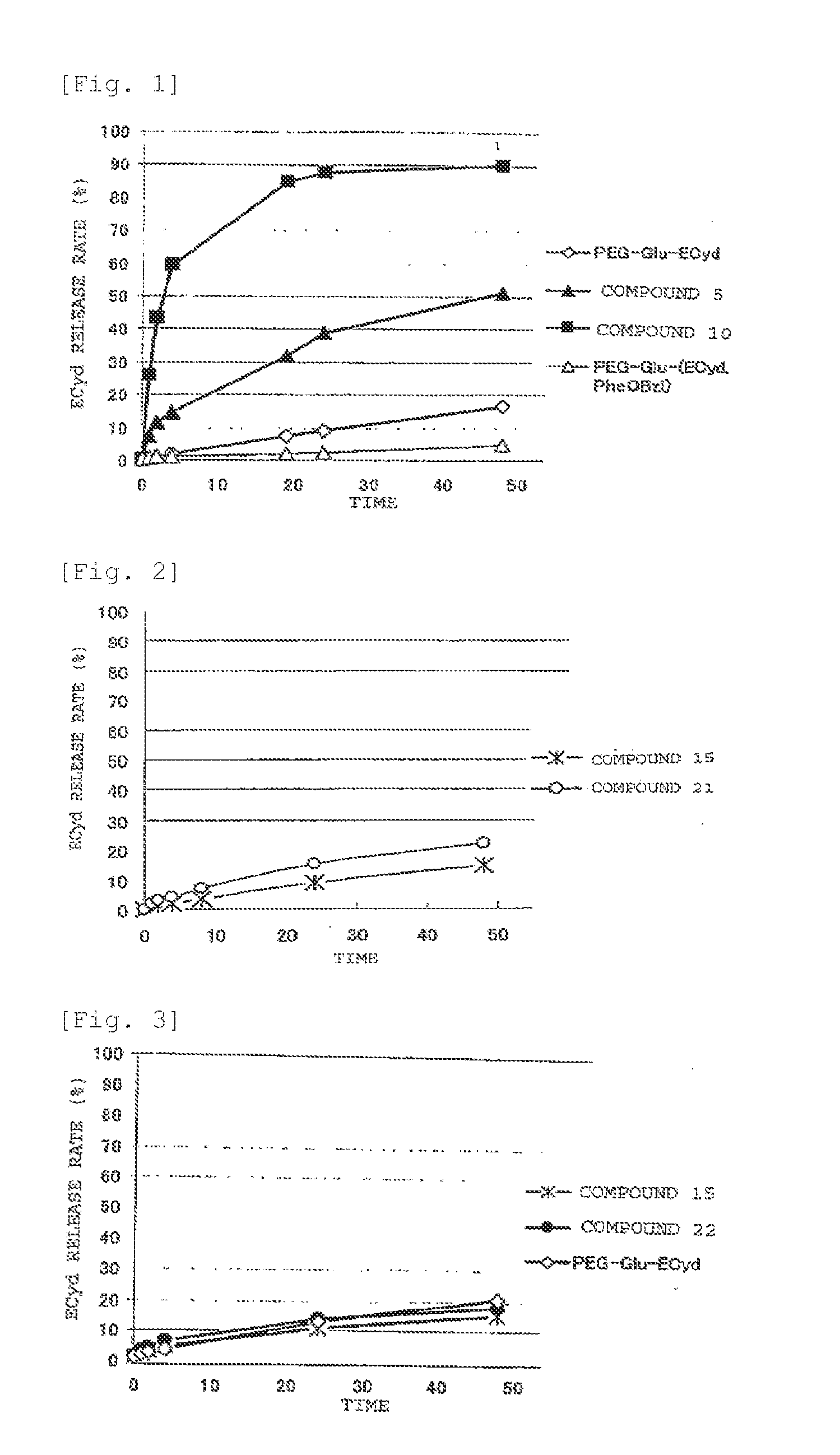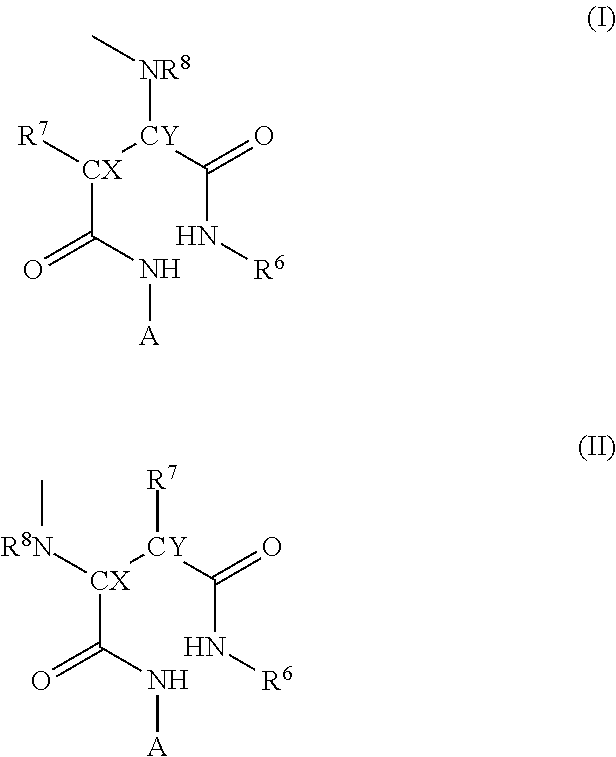Novel Polymer Derivative Of Cytidine Metabolic Antagonist
a metabolic antagonist and polymer technology, applied in the field of polymer derivatives of cytidine metabolic antagonists, can solve the problems of hyper-reactive reaction, need for higher doses, and insufficient manifestation of medicinal effects, and achieve high medicinal effects, effective medicinal effects, and uniform and easy manufactural control.
- Summary
- Abstract
- Description
- Claims
- Application Information
AI Technical Summary
Benefits of technology
Problems solved by technology
Method used
Image
Examples
synthesis example 1
Synthesis of N-(tert-butoxycarbonyl)aspartic acid-1-phenylbutyl amide-4-benzyl ester (Compound 1)
[0083]4.27 g of N-(tert-butoxycarbonyl)aspartic acid-4-benzyl ester (manufactured by PEPTIDE INSTITUTE, INC.) and 2.1 mL of 1-phenylbutyl amine were dissolved in 40 mL of DMF, and then 2.70 g of WSC hydrochloride and 1.93 g of HOBt were added thereto, and the reaction solution was stirred at room temperature for 6 hours. The reaction solution was added with water, and extracted with ethyl acetate. The organic layer was washed with a saturated aqueous solution of sodium hydrogen carbonate, dried with magnesium sulfate, and then distilled under reduced pressure to remove ethyl acetate, and then dried under vacuum, thereby to give 3.94 g of Compound 1.
[0084]MS: m / z 477 (M+Na)+: 477 of calculated value as C26H34N2O5 (M+Na)+
synthesis example 2
Synthesis of N-(tert-butoxycarbonyl)aspartic acid-1-phenylbutyl amide (Compound 2)
[0085]3.50 g of Compound 1 obtained in Synthesis Example 1 was dissolved in 15 mL of ethyl acetate, and 0.656 g of 5% palladium carbon (50% moisture content) was added thereto. Then, the inside of the reaction system was substituted with hydrogen, and the reaction system was stirred at room temperature overnight and subjected to hydrogenolysis. The 5% palladium carbon was filtered off, and washed with 80 mL of ethyl acetate. Then, the organic layers were combined, distilled under reduced pressure to remove ethyl acetate, and then dried under vacuum, thereby to give 2.58 g of Compound 2.
[0086]MS: m / z 387 (M+Na)+: 387 of calculated value as C19H28N2O5 (M+Na)+
synthesis example 3
Synthesis of N-(tert-butoxycarbonyl)aspartic acid-1-phenylbutyl amide-4-(3′-ethynylcytidine) amide (Compound 3)
[0087]754 mg of Compound 2 obtained in Synthesis Example 2, 500 mg of 3′-ethynylcytidine and 275 mg of HOBt were dissolved in 4 mL of DMF, and then the inside of the reaction system was substituted with argon, 353 mg of WSC hydrochloride was added thereto, and the reaction solution was stirred at 20° C. for 10 hours. Then, 377 mg of Compound 2 and 177 mg of WSC hydrochloride were added thereto, and the reaction solution was stirred at 20° C. for 3 hours, and subsequently 177 mg of WSC hydrochloride was added thereto, and the reaction solution was stirred at 20° C. for 2 hours, and further, 189 mg of Compound 2 and 177 mg of WSC hydrochloride were added thereto, and the reaction solution was stirred at 20° C. for 2 hours. The reaction solution was added with water and extracted with ethyl acetate. The organic layer was washed with a saturated aqueous solution of ammonium chl...
PUM
| Property | Measurement | Unit |
|---|---|---|
| Therapeutic | aaaaa | aaaaa |
Abstract
Description
Claims
Application Information
 Login to View More
Login to View More - R&D
- Intellectual Property
- Life Sciences
- Materials
- Tech Scout
- Unparalleled Data Quality
- Higher Quality Content
- 60% Fewer Hallucinations
Browse by: Latest US Patents, China's latest patents, Technical Efficacy Thesaurus, Application Domain, Technology Topic, Popular Technical Reports.
© 2025 PatSnap. All rights reserved.Legal|Privacy policy|Modern Slavery Act Transparency Statement|Sitemap|About US| Contact US: help@patsnap.com



